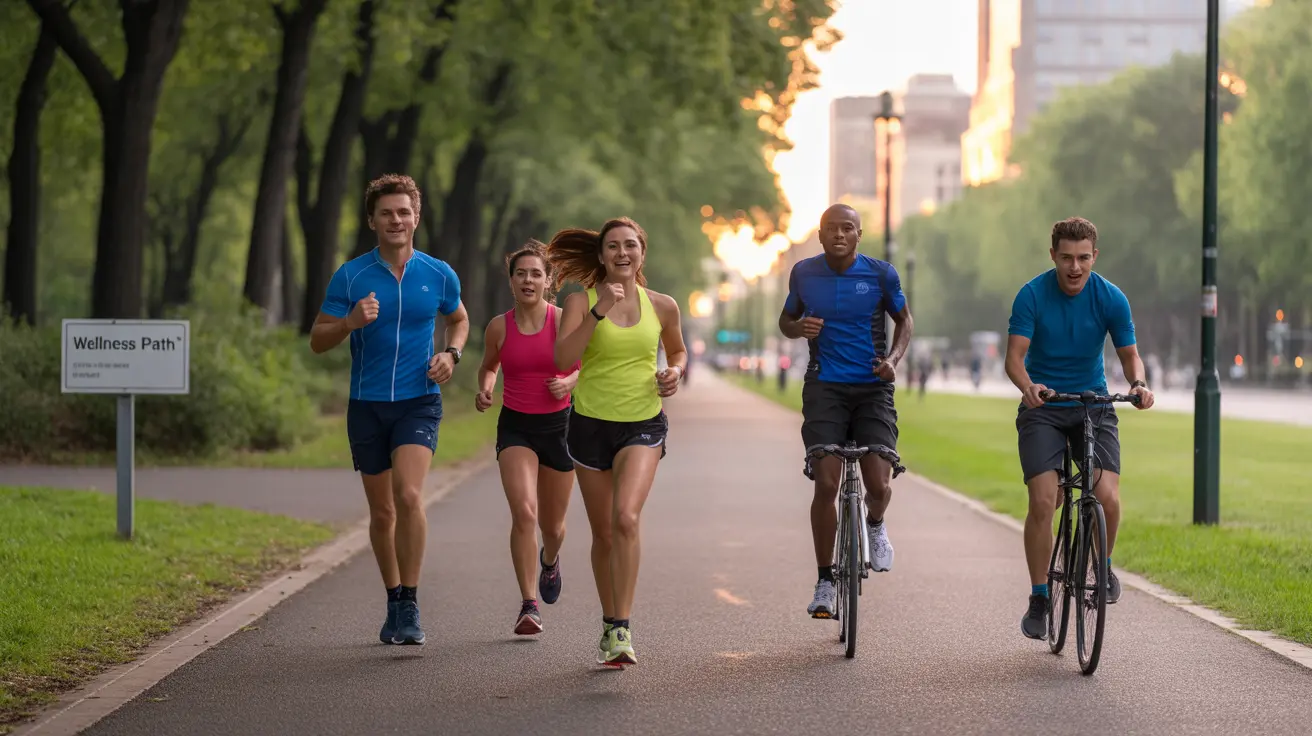Choosing between cycling and running can significantly impact your fitness journey and overall health outcomes. Both forms of cardio exercise offer unique benefits, but understanding their differences is crucial for making an informed decision that aligns with your personal fitness goals, physical condition, and lifestyle preferences.
In this comprehensive guide, we'll explore how these popular cardiovascular activities compare across various important factors, from calorie burning and joint impact to muscle engagement and equipment requirements.
Impact on Weight Loss and Calorie Burning
When it comes to calorie burning potential, both cycling and running can be effective for weight loss, but they differ in their energy expenditure rates. Running typically burns more calories per hour at the same perceived effort level. A 150-pound person running at a moderate pace (6 mph) can burn approximately 600-700 calories per hour, while cycling at a moderate speed (12-14 mph) burns about 450-550 calories per hour.
However, cycling often allows for longer workout durations due to lower impact on the body, potentially leading to greater total calorie burn over time. The key to weight loss with either activity lies in consistency and maintaining an appropriate intensity level.
Joint Impact and Injury Prevention
One of the most significant differences between these activities is their impact on joints. Running is a high-impact activity that places considerable stress on your ankles, knees, and hips with each step. This makes it more challenging for individuals with joint issues or previous injuries.
Cycling, being a low-impact activity, provides several advantages:
- Less stress on weight-bearing joints
- Reduced risk of impact-related injuries
- Better option for those recovering from lower body injuries
- More suitable for people with arthritis or joint pain
Cardiovascular Benefits and Heart Health
Both activities provide excellent cardiovascular benefits, but they challenge your heart and lungs in different ways. Running typically maintains a more consistent elevated heart rate, while cycling often creates more varied intensity patterns due to factors like terrain and wind resistance.
Cycling can be particularly beneficial for:
- Building endurance with lower physical stress
- Interval training opportunities
- Maintaining cardiovascular fitness during injury recovery
- Developing aerobic capacity at various intensity levels
Muscle Engagement and Strength Development
Running and cycling target different muscle groups with varying levels of intensity. Running primarily engages:
- Quadriceps
- Hamstrings
- Calves
- Core muscles
- Upper body (for balance and arm swing)
Cycling focuses more specifically on:
- Quadriceps
- Hamstrings
- Calves
- Glutes
- Lower back muscles
Cycling typically builds more lower body muscle mass due to the resistance component, especially when tackling hills or increasing gear resistance.
Cost and Equipment Considerations
The initial investment and ongoing costs vary significantly between these activities. Running requires minimal equipment - primarily good-quality running shoes ($100-$150) that need replacement every 400-500 miles. Additional gear like moisture-wicking clothing and accessories is optional but recommended.
Cycling involves higher upfront costs:
- Quality bicycle ($500-$2000+)
- Helmet and safety gear
- Maintenance and repairs
- Optional accessories (cycling clothes, shoes, bike computer)
Frequently Asked Questions
- Which burns more calories, cycling or running, and which is better for weight loss?
Running typically burns more calories per hour than cycling at similar effort levels. However, cycling allows for longer workout sessions, potentially leading to similar total calorie burn. Both can be effective for weight loss when combined with proper nutrition and consistent training.
- Is cycling or running better for people with joint pain or previous injuries?
Cycling is generally better for people with joint pain or previous injuries due to its low-impact nature. It puts less stress on weight-bearing joints while still providing excellent cardiovascular benefits and muscle strengthening opportunities.
- How do cycling and running impact heart health and cardiovascular fitness differently?
Both activities improve cardiovascular health, but running typically maintains a more consistent elevated heart rate, while cycling creates varied intensity patterns. Cycling allows for longer duration workouts, while running may achieve peak heart rates more quickly.
- Can cycling help build muscle more than running, and which muscles do each exercise work?
Cycling typically builds more lower body muscle mass, especially in the quadriceps and glutes, due to resistance training elements. Running engages more muscles throughout the body but focuses more on lean muscle development and endurance rather than muscle building.
- What are the main differences in cost and equipment needed for cycling versus running?
Running requires minimal equipment investment, mainly good running shoes ($100-$150) replaced every 400-500 miles. Cycling has higher upfront costs, including the bicycle ($500-$2000+), safety gear, and maintenance expenses, but equipment typically lasts longer.




